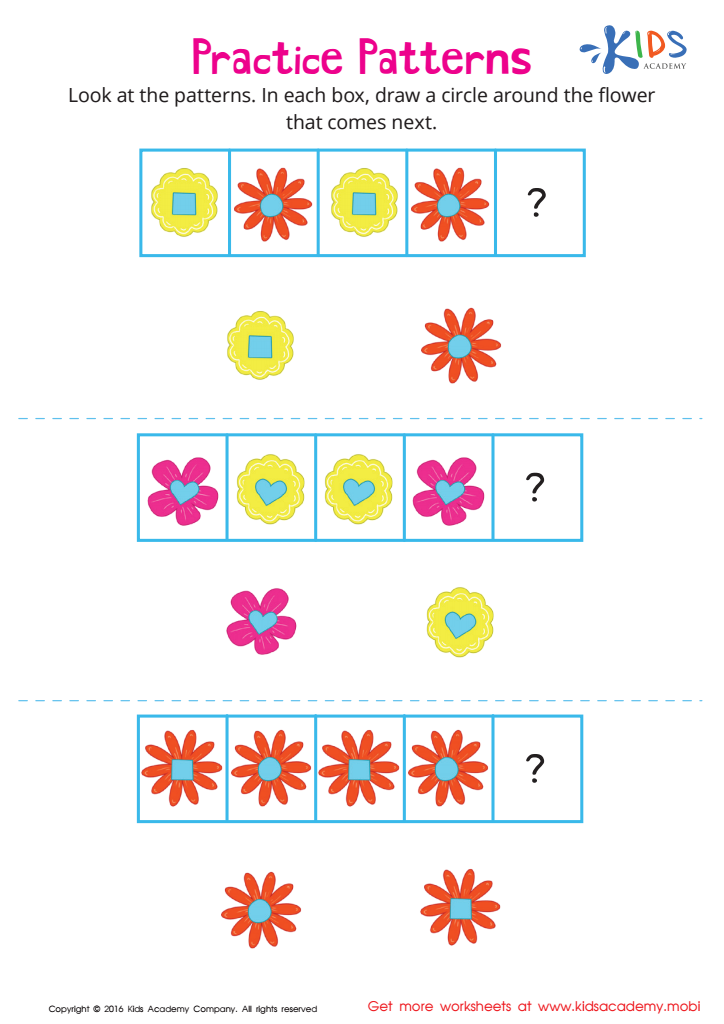Normal Patterns Worksheets for Ages 3-6
5 filtered results
-
From - To
Discover our "Normal Patterns Worksheets for Ages 3-6" designed to foster early math skills in young learners. These engaging and educational worksheets help children recognize, identify, and create patterns through fun, colorful activities. Perfect for preschool and kindergarten students, our resources support cognitive development and enhance problem-solving abilities. Tailored to captivate young minds, these worksheets are an excellent tool for parents and teachers to ensure foundational math proficiency. Visit Kids Academy to download and inspire your child's learning journey with our expertly crafted materials.
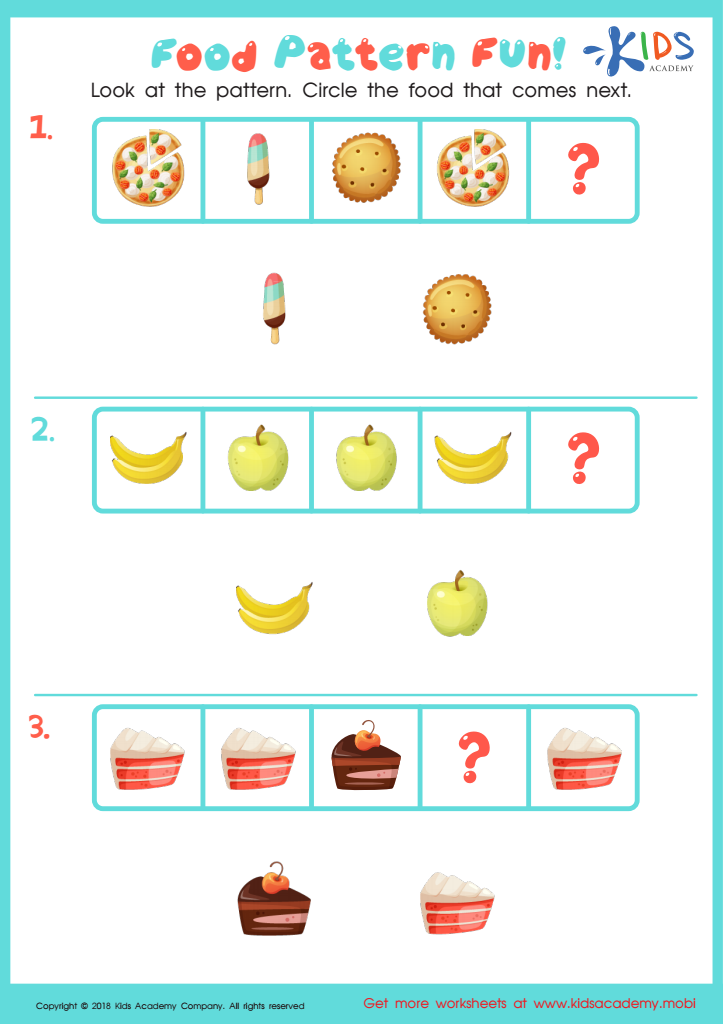

Food Pattern Fun Worksheet
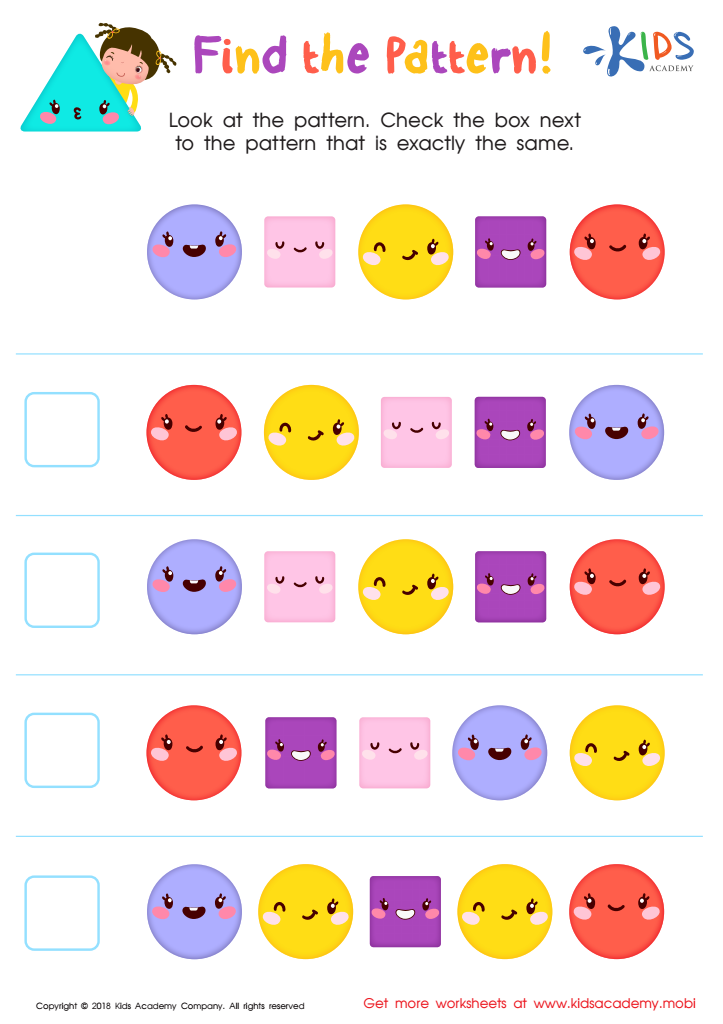

Find the Pattern Worksheet
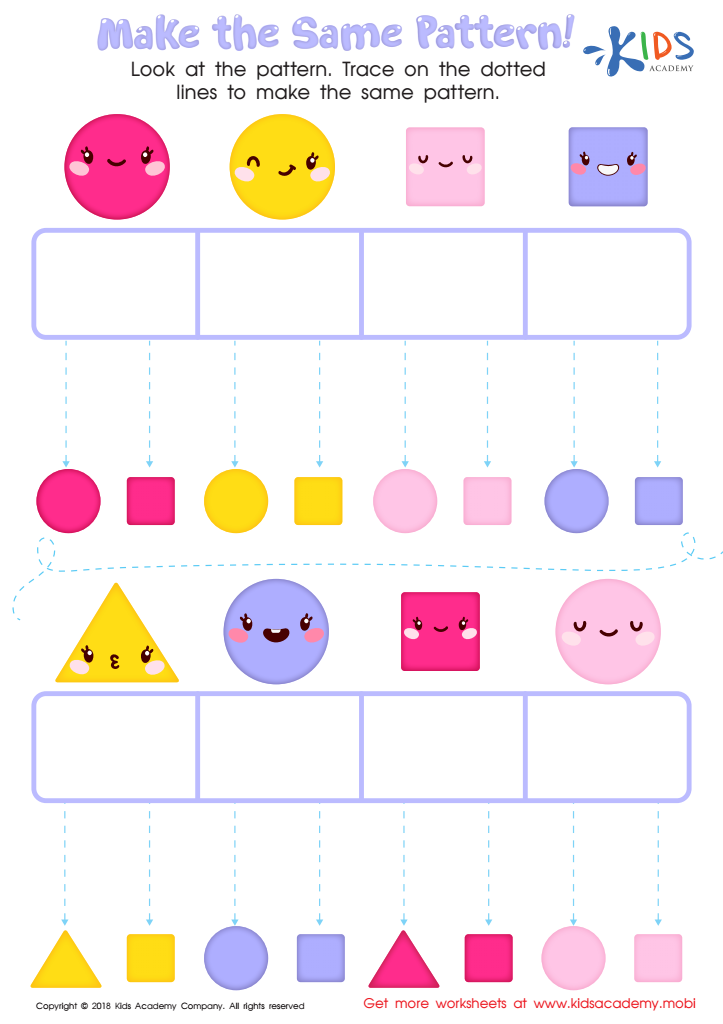

Make the Same Pattern Worksheet
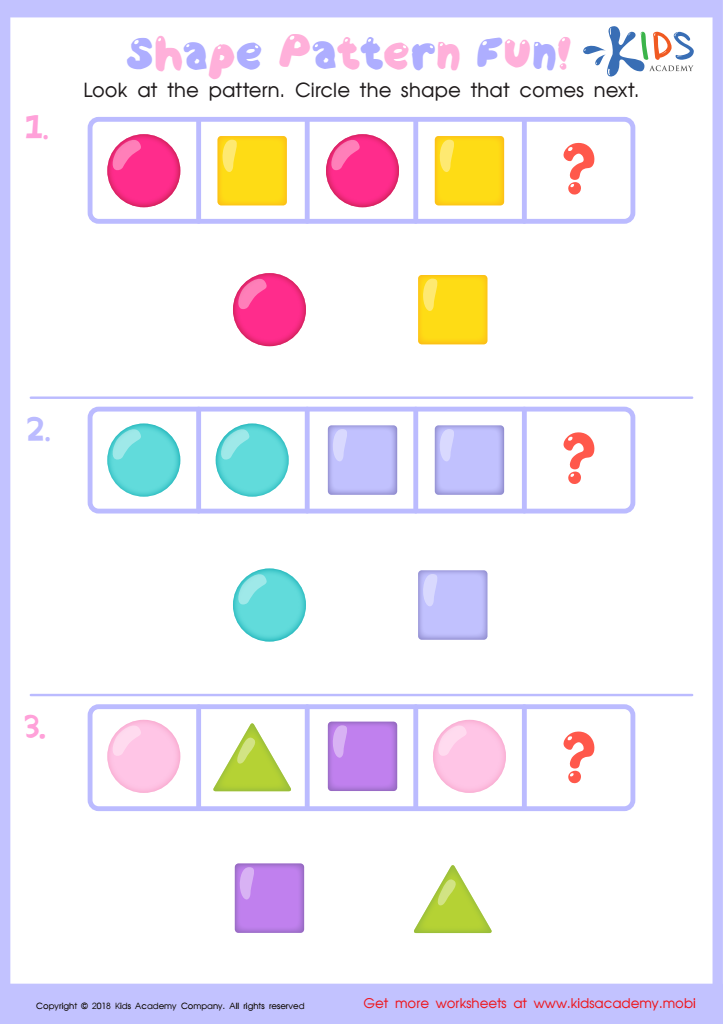

Shape Pattern Fun Worksheet
Understanding normal developmental patterns for children ages 3-6 is crucial for both parents and teachers. During these early years, children go through rapid physical, emotional, cognitive, and social growth. Recognizing and supporting these normal patterns allows adults to provide the appropriate environment and resources to nurture a child's development effectively.
For instance, knowing that most 3-year-olds are developing motor skills such as running and drawing helps parents and teachers provide activities that enhance these abilities. Additionally, children at this age begin to exhibit significant language skills and social behaviors. Recognizing signs of atypical development can prompt timely interventions, ultimately preventing potential long-term challenges.
Moreover, normal developmental patterns guide parents and teachers in setting realistic expectations. An understanding of typical behaviors, such as temper tantrums or the desire for independence, helps mitigate frustration and fosters patience. Providing consistent routines and boundaries that align with developmental stages builds a sense of security and promotes healthy emotional development.
Ultimately, awareness and knowledge of these patterns enable effective communication and collaboration among educators, parents, and healthcare professionals, ensuring a well-rounded support system. Early identification and support can create a strong foundation for lifelong learning and personal growth, making it essential for parents and teachers to be attuned to normal developmental milestones.
 Assign to My Students
Assign to My Students

